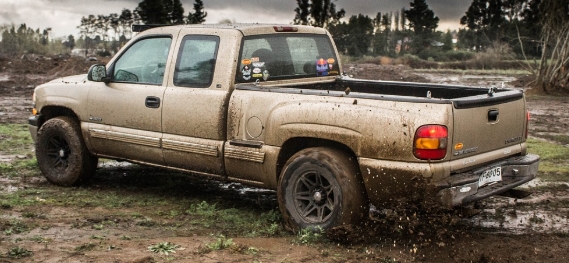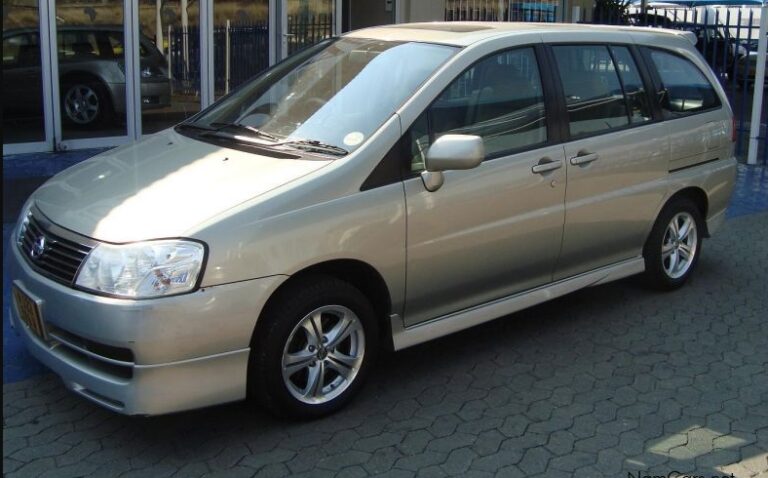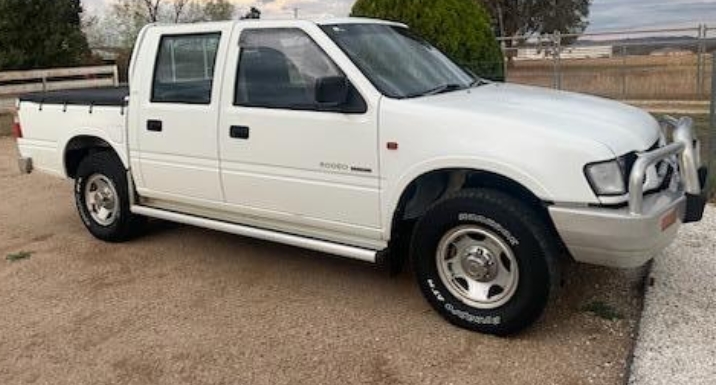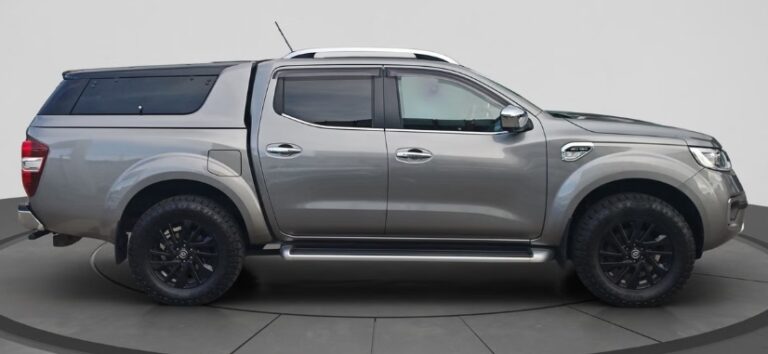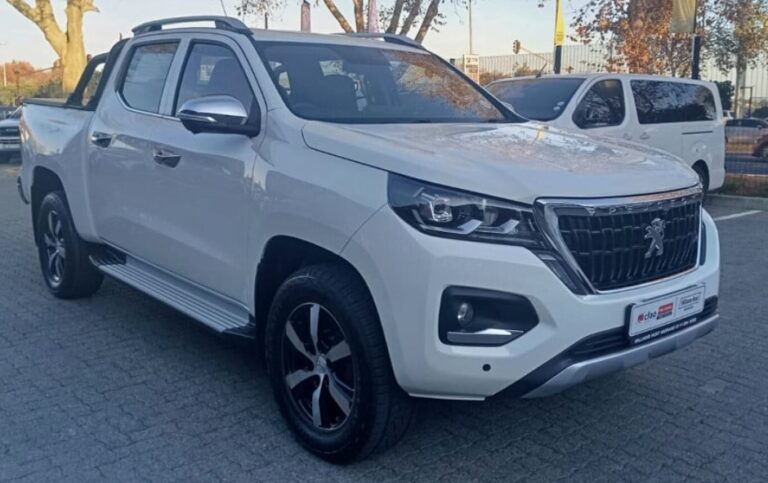The Unsung Hero of the Outback: A Deep Dive into the Evolution of the Holden Frontera
For many Australians, the Holden Frontera represents a significant chapter in their automotive lives. It wasn’t the most potent, the most luxurious, or the most technologically advanced SUV on the market, but it carved out a vital niche for itself as an affordable, capable, and surprisingly adaptable all-rounder. Replacing the aging Holden Monterey and providing a more accessible entry point into the world of four-wheel-drive for a burgeoning market, the Frontera, though a badge-engineered Isuzu Rodeo, became a distinctly Australian icon in its own right. This article will chronicle the evolution of the Holden Frontera, tracing its journey from its inception to its eventual discontinuation, examining the models, trim levels, and key developments that defined its time on Australian roads.
The Genesis: From Rodeo to Frontera (1998-2004)
The first generation of the Holden Frontera arrived in Australia in 1998, a joint venture born from General Motors’ (GM) long-standing relationship with Isuzu. The Frontera was, in essence, a rebadged Isuzu Rodeo TF, a popular utility vehicle in its own right. This initial offering was designed to fill a gap in Holden’s SUV portfolio, providing a rugged, body-on-frame chassis that promised genuine off-road capability.
The early Frontera was available in two distinct body styles: a three-door, short-wheelbase (SWB) model, often dubbed the “Sport,” and a more practical five-door, long-wheelbase (LWB) model. This duality catered to different needs, with the SWB version appealing to those seeking a more agile, recreational vehicle, while the LWB offered more passenger and cargo space for families and adventurers.
Under the bonnet, the initial wave of Fronteras were powered by a choice of two engines:
- 2.2-litre 16-valve DOHC four-cylinder petrol engine: This offered a respectable blend of performance and economy for everyday use.
- 2.8-litre 8-valve SOHC turbo-diesel engine: This was the workhorse option, prized for its torque and fuel efficiency, making it ideal for towing and tackling tougher terrain.
Transmission options typically included a 5-speed manual or a 4-speed automatic. The drivetrain was selectable four-wheel-drive, featuring a low-range gear for serious off-roading.
In terms of trim levels, Holden aimed for a tiered approach:
- Base/SX: This was the entry-level model, featuring essential amenities. Expectations here were for basic functionality, often with manual windows and a simpler stereo system.
- SE: Stepping up, the SE offered a more comfortable experience with features like air conditioning, power windows, and potentially a better audio system.
- Limited Edition (LE): This often denoted a special run with added styling cues or a slightly enhanced feature set, aimed at adding a touch of exclusivity.
The first-generation Frontera, while not exactly a sales juggernaut that would eclipse its rivals, established a solid reputation for its ruggedness and affordability. It was a common sight on weekend camping trips and tackling dirt tracks, proving its worth as Australia’s answer to accessible off-road adventure.
.

.
Mid-Life Refresh and Refinements (2001-2004)
In 2001, the Holden Frontera received a significant facelift, bringing it more in line with contemporary design trends and addressing some of the initial criticisms. The exterior was subtly restyled with a new grille, updated headlights, and revised bumpers. The interior also saw improvements, with a more modern dashboard layout and better quality materials.
The engine options remained largely the same, with the 2.2-litre petrol and 2.8-litre turbo-diesel continuing their service. However, there were minor tweaks to power outputs and fuel efficiency.
The trim level nomenclature also saw some adjustments and additions:
- SX: Continued to be the base model, but with some enhancements over the initial offering.
- SE: The mid-range option, gaining more standard features.
- XU: This trim level was introduced, often signifying a slightly higher specification within the SE category or a distinct package of features.
- LT: This was generally the range-topping model, offering the most comprehensive list of features. Expect things like leather upholstery (optional or standard depending on the specific iteration), a more advanced audio system, alloy wheels, and potentially side steps.
- Limited Editions: Holden continued to release various limited editions throughout this period, often identified by suffixes like “Limited,” “Adventure,” or specific color schemes, adding appeal and driving sales.
This mid-life refresh helped the Frontera maintain its presence in the market. It offered a more appealing package for families looking for a capable and budget-friendly SUV that could handle both urban commutes and weekend escapes.
The Second Generation: A More Refined, Yet Familiar, Offering (2004-2006)
The year 2004 marked the arrival of the second generation of the Holden Frontera. While still based on the Isuzu Rodeo platform, this iteration presented a more substantial evolution. The exterior design was significantly updated, with a more rounded and modern aesthetic, losing some of the boxy ruggedness of its predecessor. The LWB model was the primary focus, with the SWB variant becoming less prominent or eventually phased out in some markets.
The engine lineup saw a notable upgrade:
- 3.5-litre V6 petrol engine (6VE1): This engine, a significant step up in power and refinement from the previous four-cylinder, offered a smoother and more potent driving experience. It was naturally aspirated and provided a healthy dose of torque for acceleration and towing.
- 3.0-litre 16-valve DOHC turbo-diesel engine (4JX1): This was a more advanced diesel engine compared to the previous 2.8-litre. It featured electronic fuel injection for improved performance, efficiency, and emissions.
Transmission options remained a 5-speed manual and a 4-speed automatic, though the automatic was often favoured for its ease of use in this generation. The four-wheel-drive system continued to be selectable, with a low-range transfer case.
The trim levels for the second generation were generally streamlined:
- SX: The entry-level model, still offering basic functionality but with improved standard features over previous base models.
- XU: This trim level was re-introduced, often representing a step up in creature comforts and technology.
- LT: The flagship model, boasting the most comprehensive feature list. This typically included climate control, premium audio systems, alloy wheels, fog lights, and often leather-appointed seats.
- Limited Editions: As before, Holden continued to offer limited editions, often featuring unique badging, enhanced styling packs, or bundled optional extras.
This second generation aimed to elevate the Frontera’s appeal beyond its purely utilitarian roots. The V6 engine, in particular, made it a more competitive offering against other V6-powered SUVs in its segment. The updated styling and improved interior also contributed to a more contemporary feel.
End of an Era: Discontinuation and Legacy (2006)
Despite the improvements of the second generation, the automotive landscape was rapidly evolving. The SUV market was becoming increasingly saturated with more sophisticated, car-based SUVs (crossovers) that offered superior on-road comfort and fuel efficiency. The traditional body-on-frame SUVs, while still possessing their off-road prowess, were starting to feel a little dated in comparison.
In 2006, Holden made the decision to discontinue the Frontera in Australia. The mantle of Holden’s primary mid-size SUV offering was then passed to the more car-like Holden Captiva, which was built on a monocoque chassis and catered to a different set of consumer priorities.
The demise of the Frontera marked the end of an era for Holden’s dedicated, rugged, body-on-frame SUV. While it might not have achieved the same legendary status as some other Holden models, its impact on the Australian automotive scene was undeniable.
The Holden Frontera’s Enduring Appeal:
The Holden Frontera, despite its Isuzu origins, became a distinctly Australian vehicle in the eyes of many. Its affordability made it accessible for a wide range of buyers, from young families to adventurous individuals. Its robust construction and genuine four-wheel-drive capability meant it could reliably tackle the diverse Australian terrain, from the beach to the bush.
- Affordability: This was a key selling point. The Frontera offered a taste of SUV ownership and off-road capability at a price point that many competitors couldn’t match.
- Capability: For its price, the Frontera was surprisingly competent off-road. The selectable four-wheel-drive system with low-range gearing provided confidence for those venturing beyond the bitumen.
- Versatility: The availability of both short and long-wheelbase models, and later, the family-friendly five-door configuration, allowed the Frontera to cater to a broad spectrum of needs.
Today, the Holden Frontera remains a popular choice on the used car market for budget-conscious buyers seeking a capable and affordable SUV. They are often sought after by those who value simplicity, durability, and genuine off-road credentials. While newer, more technologically advanced SUVs have taken centre stage, the Holden Frontera deserves its place in Australian automotive history as a practical, dependable, and ultimately, an unsung hero of the outback. Its evolution, from a rebadged utility vehicle to a more refined familial SUV, mirrors the changing demands of the Australian market, and its enduring appeal speaks volumes about its success in meeting those demands for a significant period.


